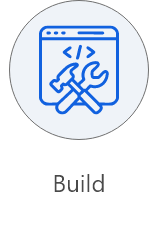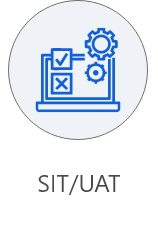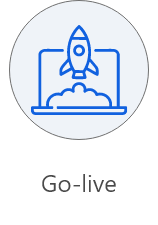share
A recent demonstration showcased the extraordinary potential of generative AI and large language models. We witnessed a system capable of ingesting business requirements and dynamically building, iterating, and testing applications in real time.
This is not a vision of the future, it’s already unfolding. Tools with these capabilities are rapidly emerging, poised to fundamentally reshape how applications are developed.
This Raises a Pivotal Question:
How will this transformation impact System Integrators (SIs) and Technology Consulting Services? Traditionally, SIs have focused on translating business requirements into configurations within packaged software. However, with generative AI capable of constructing applications from scratch, the configuration process could be radically streamlined or even replaced.
At Smartlinks, we are actively exploring the depth of this disruption. It’s increasingly clear that the consulting landscape is undergoing a seismic shift. Even strategic consulting the high-level design of business direction is being reshaped. A new possibility is emerging: a single, integrated firm guiding clients from business process design all the way to implementation. What used to be siloed capabilities are converging, and generative AI is the catalyst.
Let’s explore this transformation across three evolving paradigms.
Paradigm One: Traditional Consulting
- The legacy approach to onboarding consultants involved extensive training typically 3–4 months to build product knowledge needed to model customer requirements. This was followed by shadowing and months of ramp-up before achieving full productivity.
- Projects followed a linear methodology:





This sequential, waterfall like model especially prevalent in supply chain consulting was not suited to fast iteration. While Agile development gained traction, consulting remained slow moving.
Paradigm Two: Consulting with Generative AI
- Now envision a transformed world:
- Requirements discussions drive real-time solution modeling
- Systems are dynamically configured during conversations
- Testing occurs in parallel with design
- Consider a supply chain planning scenario:
- A consultant outlines how financial cycles should run, and within moments, AI models and simulates the process. This instant visualization leads to:
- Faster alignment with clients
- Higher solution quality
- Dramatic acceleration of project timelines
Challenges such as shifting requirements, extensive change requests, and time-and-material complexity are minimized through continuous iteration and transparent collaboration.
Smartlinks’ Innovation Frontier

Smartlinks has long pushed the boundaries of service innovation. Our “Day in the Life of a Planner” methodology helped clients envision solution outcomes much earlier in the engagement. Still, delivering working prototypes with real data used to take weeks. Now, with generative AI, that timeline compresses to days or even hours.
We are developing a Services Innovation Model designed to collapse the traditional lifecycle design, configuration, testing, and go-live into a single, seamless consulting journey.
Customer Benefits:
- Radically reduced time-to-value
- Fewer change requests
- Greater implementation accuracy
- Real-time feedback and transparency
What This Means Internally for Smartlinks
This shift isn’t just technological it’s cultural. Understanding complex enterprise platforms is being dramatically accelerated by generative AI. Our consultants use AI to parse documentation, explore use cases, and co create solutions. Formal training requirements are shrinking significantly.
Real-World Examples:
- A new consultant in Thailand designed a complete financial model using generative AI and domain understanding without traditional product training.
- A functional consultant built new configurations based on client inputs, assisted by generative prompts.
- Consultants are switching fluidly across different software platforms using foundational knowledge and AI assistance.
This Is The New Standard:
- Consultants must be AI native
- Success is rooted in first principles thinking and deep domain fluency
- Smartlinks is codifying new enablement rubrics and frameworks to support this evolution
Paradigm Three: Autonomous Consulting and Operations
We are now asking bold, forward-looking questions:
- Can AI agents autonomously configure, test, and deploy enterprise software?
- Can these agents run end-to-end operations?
At Smartlinks, we are actively experimenting with:
- AI agents that handle configuration, validation, and go-live autonomously
- AI systems that manage ongoing business functions like planning, reporting, and exceptions
This model reimagines consulting. Human consultants transition into strategic overseers refining and supervising autonomous systems rather than executing tasks manually.
This reduces change management, speeds up onboarding, and redefines the consulting role as a guide, orchestrator, and continuous innovator.
Smartlinks is not merely responding to change we’re pioneering it. Through bold thinking, rapid experimentation, and reimagined service models, we are shaping the future of consulting. If you’re curious, inspired, or eager to co-create this new paradigm, connect with us at Smartlinks. The future is already here and we’re building it.